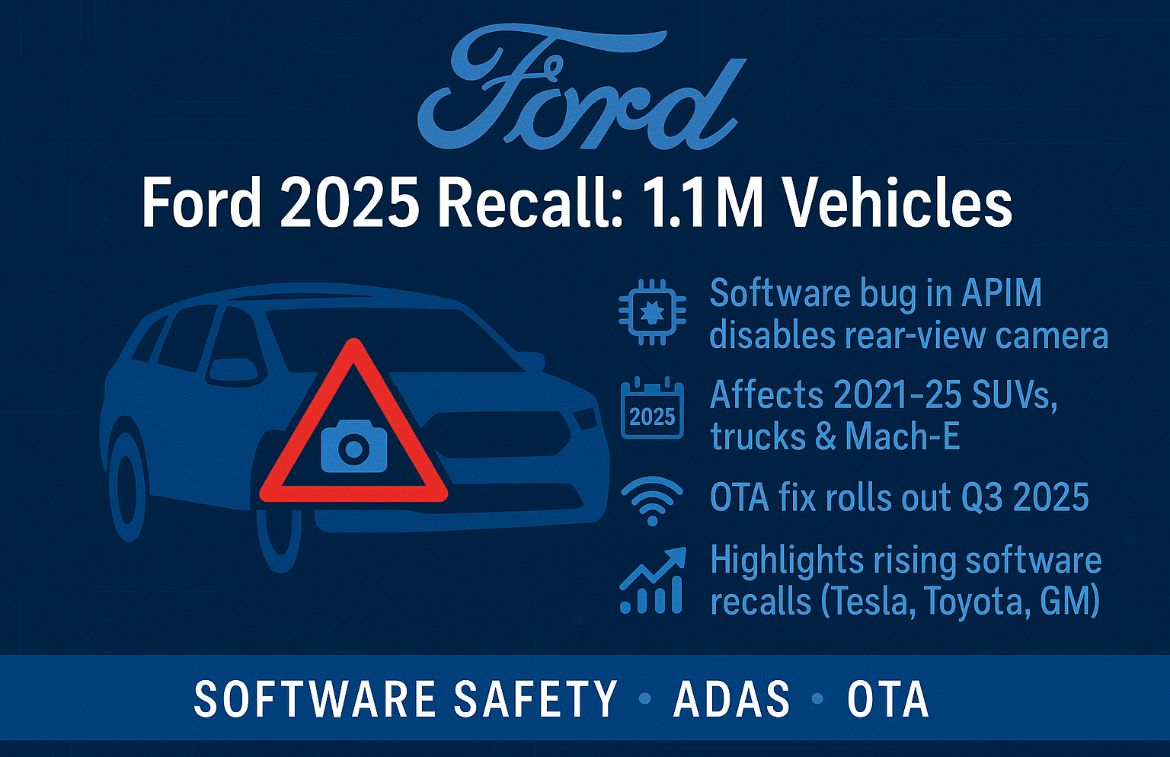Your cart is currently empty!
China’s ADAS Reality Check: Why Beijing’s Crackdown Could Reshape Driver-Assist Tech Worldwide
Posted by:
|
On:
|

When a Xiaomi SU7 on “Navigate-on-Autopilot” ploughed into a concrete barrier at nearly 100 km/h this spring—killing three engineering students—public outrage finally drowned out the hype around “self-driving” cars in China. Within three weeks, the Ministry of Industry & Information Technology (MIIT) issued draft rules that pull the handbrake on the country’s break-neck ADAS rollout [1].
What China’s Draft Rules Actually Say
- No more marketing buzzwords. Ads or brochures can’t use “autonomous,” “smart driving,” or similar claims; only SAE-level labels like “L2 assisted” are allowed [2].
- Hands-on, eyes-on only. Every consumer ADAS is capped at Level 2, with mandatory driver-monitoring cameras that trigger escalation and safe-stop if the driver checks out [2].
- Public beta testing is over. User “beta fleets”—a Tesla staple—are banned unless a government waiver is granted [2].
- Remote-summon tricks? Forbidden. Any function that moves the car without a human in the loop is off-limits for now [2].
- Regulators vet every OTA. Driving-related software updates need pre-approval; emergency patches can be treated like formal recalls [2].
These measures yank China from the “move-fast-and-ship-beta” playbook toward something closer to Europe’s cautious, type-approval regime.

How the Rest of the World Compares (in 3 Quick Snapshots)
- United States – Innovation first, guard-rails later. Automakers self-certify, and NHTSA often reacts post-crash. Tesla’s 2023 recall of 2 million cars to beef up Autopilot safeguards shows the cost of that permissive stance [3]. California is tightening the screws with SB 1398, banning deceptive “Full Self-Driving” branding [4], but federally the buzzwords still fly.
- European Union – Safety case before sales pitch. UNECE R157 dictates exhaustive validation for Level 3 systems, which let Mercedes-Benz launch Drive Pilot under 60 km/h traffic jam speeds—complete with redundant sensors and a legal liability shift to the OEM [5]. On top, the EU General Safety Regulation now mandates AEB, lane-keep, and driver-drowsiness alerts on every new model [6].
- Japan – Methodical by design. Honda’s Legend “Traffic Jam Pilot” is the world’s first type-approved Level 3 car, but only 100 units were leased domestically, geo-fenced to low-speed highways and HD-mapped lanes [7]. No viral feature races here—just slow, audited expansion.


Why This Matters Beyond China
Marketing teams must rewrite the playbook. Beijing’s criminal-liability clause for deceptive ads is a shot across global C-suites: oversell tech, and both reputation and executives’ freedom are on the line.
Software release cadence will slow—but get safer. Mandatory regulator sign-off turns the “ship fast, patch later” model into a staged validation pipeline. Expect longer sprint cycles, heavier regression testing, and bigger homologation budgets.
Driver-monitoring cameras go global. With China demanding always-active DMS, Tier-1s will scale volume quickly, making the hardware a no-brainer add-on for U.S. and EU trims.
Suppliers of redundant perception stacks win. MIIT’s hands-on rule pushes OEMs toward robust radar + camera + lidar fusion—even at L2—creating opportunities for chipmakers (Nvidia, Mobileye), imaging radar start-ups, and eye-tracking specialists.
Three Takeaways
- Design for graceful degradation. The Xiaomi crash showed that a last-second disengage isn’t enough. Future ADAS must handle the edge case—or refuse engagement in the first place [1].
- Treat driver monitoring as a primary sensor, not an after-thought. If the car can’t verify human readiness, it shouldn’t drive.
- Harmonize your feature set to the strictest market. Building separate code branches for China, EU, and U.S. will tank velocity; instead, adopt global “lowest-common-risk” defaults.

References
[1] MIIT, “Closed-door briefing on advanced driver-assistance regulation,” Apr. 16 2025.
[2] MIIT, “Draft Administrative Measures for Driver-Assistance Systems,” Apr. 2025.
[3] National Highway Traffic Safety Administration, “Safety Recall Report 23V-865,” Dec. 13 2023.
[4] California Senate, “SB 1398: False Advertising of Autonomous Capabilities,” Sept. 2022.
[5] UNECE, “Regulation 157 — Automated Lane Keeping Systems,” 2021 (01 Series Amendments 2022).
[6] European Parliament & Council, “General Safety Regulation (EU) 2019/2144,” July 2022 implementation.
[7] Honda Motor Co., “Legend with Traffic Jam Pilot Certified as Level 3,” Press Release, Mar. 2021.
Posted by



